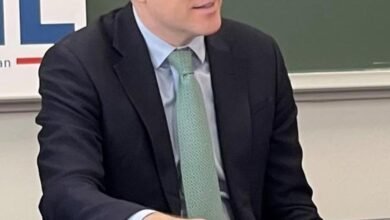New high yield funds are hitting the market as Fed prepares to cut interest rates

With a Federal Reserve rate cut looming, investors might have to look to riskier parts of the bond market to keep their income levels steady. Columbia Threadneedle is one of the firms that thinks the high yield sector of the bond market is an area where active management can make a difference. The firm launched two high yield ETFs on Thursday, aimed at different sections of the high yield market: the Columbia U.S. High Yield ETF (NJNK) and Columbia Short Duration High Yield ETF (HYSD) . Marc Zeitoun, head of North America product and business intelligence at Columbia Threadneedle, said he believes investors should always have exposure to high yield but that there might be more appetite for investors now that the Federal Reserve is expected to cut rates. The Fed fund futures market implies that traders expect a rate cut of 25 basis points, or 0.25%, next week, with more cuts before the end of the year, according to the CME FedWatch tool . “Rates can go up and down, and markets can price that, but clients who need income cannot tolerate that,” Zeitoun said. The state of high yield So far this year, high yield debt is outperforming the bond market as a whole. The biggest high yield index ETF, the iShares Broad USD High Yield Corporate Bond ETF (USHY) , has returned 7.2% year to date, compared with 4.9% for the firm’s Core U.S. Aggregate Bond ETF (AGG) . Columbia’s new funds are more expensive than USHY, but the fees are roughly in line with some of the other popular high yield ETFs. Corporate bond yields are typically set relative to a risk-free benchmark, with riskier or “junk bonds” getting the highest yields. But the gap between the risk-free rate and the high yield levels are not constant over time or from one bond issuance to another. Right now, the spreads between Treasurys and riskier bonds are abnormally low. Dan DeYoung, one of the managers of the NJNK, said that the market was implying a default rate of about 1%, which Columbia Threadneedle believes is too optimistic. “We were pretty close to rock bottom spreads in the last 12 months. … That’s just telling us that default expectations, at least implied in the spread rate, are pretty low, when in reality our expectation is they’re probably going to be somewhere in the 3% range,” DeYoung said. The NJNK is a rules-based fund with an active component. The goal is to avoid the riskier “tail” of the high yield market. “We’re maximizing the exposure to the best stuff in high yield, which gives investors very strong current income with the potential of benefiting from declining rates because you are picking up some more of the duration,” DeYoung said of NJNK. The Columbia Threadneedle funds are new and don’t have track records. However, DeYoung is also a manager on the Columbia High Yield Bond (CHYZX) mutual fund, which has a four-star rating from Morningstar. High yield when rates fall When market interest rates go down, the price of long-term bonds tends to rise. This is because those bonds present longer duration, or sensitivity to interest rates, expressed as a measure of time. However, there are some wrinkles to that outlook that pop up when focusing on high yield bonds. Because long duration investments have a lot of their value based on far away cash flows, a weakening economy that leads to fears of widespread defaults could cause the spreads to widen, meaning that the quoted yields on the bonds stay the same or even move higher as the Fed cuts rates. This characteristic suggests that a high yield fund could underperform other types of bond funds during a rate cutting cycle, especially on a price basis. Kris Keller, one of the managers for the short-duration focused HYSD, said the short-term high yield market can perform better than the group as a whole during economic drawdowns for this reason, but it doesn’t take away the risk of a default. “Avoiding credit losses is even more paramount, because there’s less of an opportunity to offset those or mitigate those with price appreciation within other investments. And that’s why we take an entirely active approach within the short-duration that’s backed by our rigorous bottom-up credit research approach,” Keller said. Columbia Threadneedle is not the only fund to launch high yield funds this year. Some other recent examples include the BlackRock High Yield ETF (BRHY) and the AB Short Duration High Yield ETF (SYFI) .
Source link





